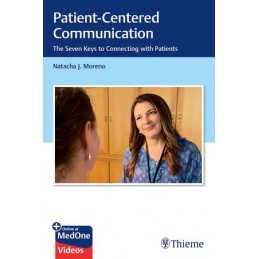- Reduced price

Order to parcel locker

easy pay


 Delivery policy
Delivery policy
Choose Paczkomat Inpost, Orlen Paczka, DHL, DPD or Poczta Polska. Click for more details
 Security policy
Security policy
Pay with a quick bank transfer, payment card or cash on delivery. Click for more details
 Return policy
Return policy
If you are a consumer, you can return the goods within 14 days. Click for more details
A practical resource that provides keys to improved patient-provider communication in healthcare
Engages its readers not only on an intellectual level but also on an emotional one…. This is a must read for everyone in the healthcare field and also for those involved in any form of caregiving. Natacha has written an inspiring book!
George Kohlrieser, PhD, Distinguished Professor of Leadership and Organizational Behavior
Patient-Centered Communication:: The Seven Keys to Connecting with Patients by Natacha J. Moreno supports and enhances caring communication and empathetic dialogue between providers and patients, an extremely important topic that exemplifies excellence in medical practice. The book focuses on seven essential components which form the foundation of compassionate communication. These are mindfulness, intention to bond, positive body language, empathetic vocal tone, attending to the patients state and perspective, and listening with the heart and mind. The chapters provide instruction on effective verbal and nonverbal skills that support each vital key to connection.
Key Highlights
This highly compelling and inspirational book is an essential read for all healthcare professionals and caregivers, and serves as a vital teaching guide.
This book includes complimentary access to a digital copy on https://medone.thieme.com.
Data sheet
1 Being Mindful of Personal State
2 Attending to the Patients State
3 Considering the Patients Perspective
4 Addressing the Patient with the Intention to Bond
5 Employing Positive Body Language
6 Listening with the Heart and the Mind
7 Using Vocal Tone that Reflects Empathy
Reference: 103122
Author: Stephen Hunt
Reference: 103593
Author: Alan R. Catanzariti
Reference: 103382
Author: Chris Bonell
Reference: 103256
Author: Alan R Hauser
Reference: 104157
Author: Thomas S. Roukis
Reference: 94215
Author: Jarrett D. Cain
Reference: 99433
Author: Gabriel Ortiz
